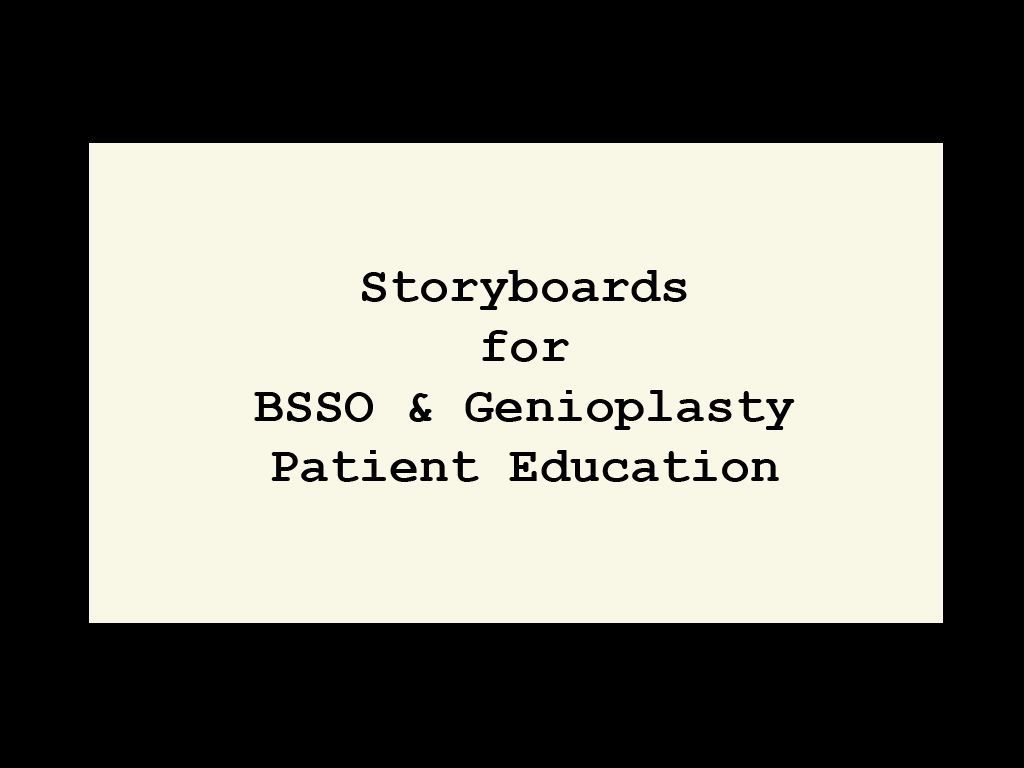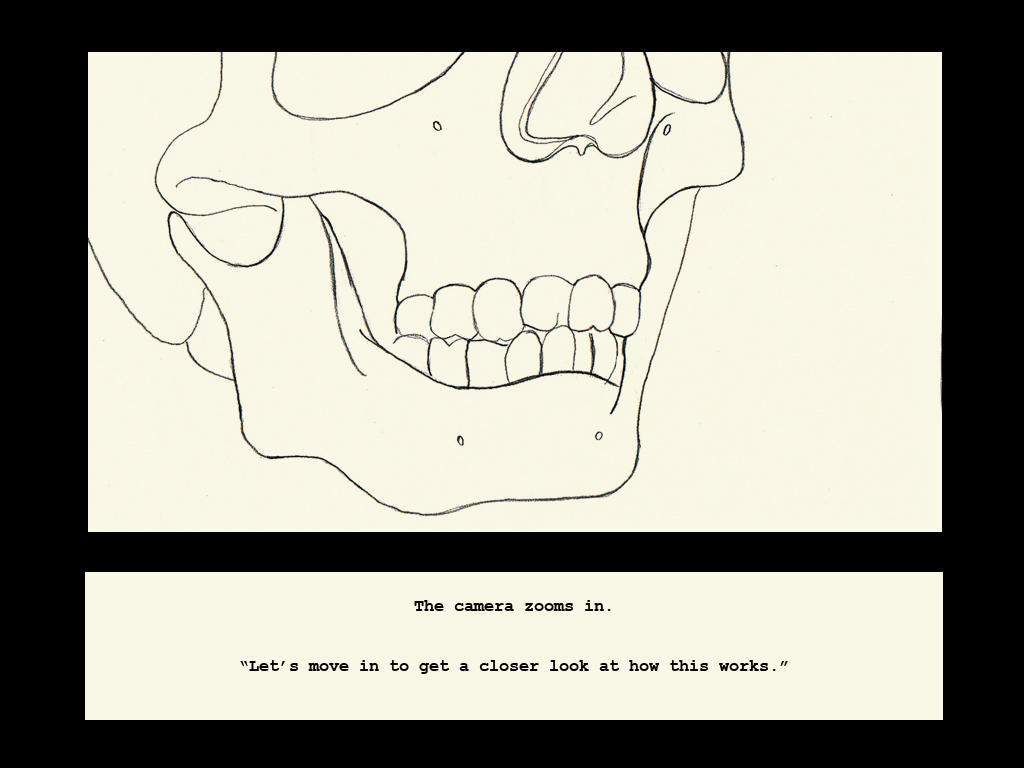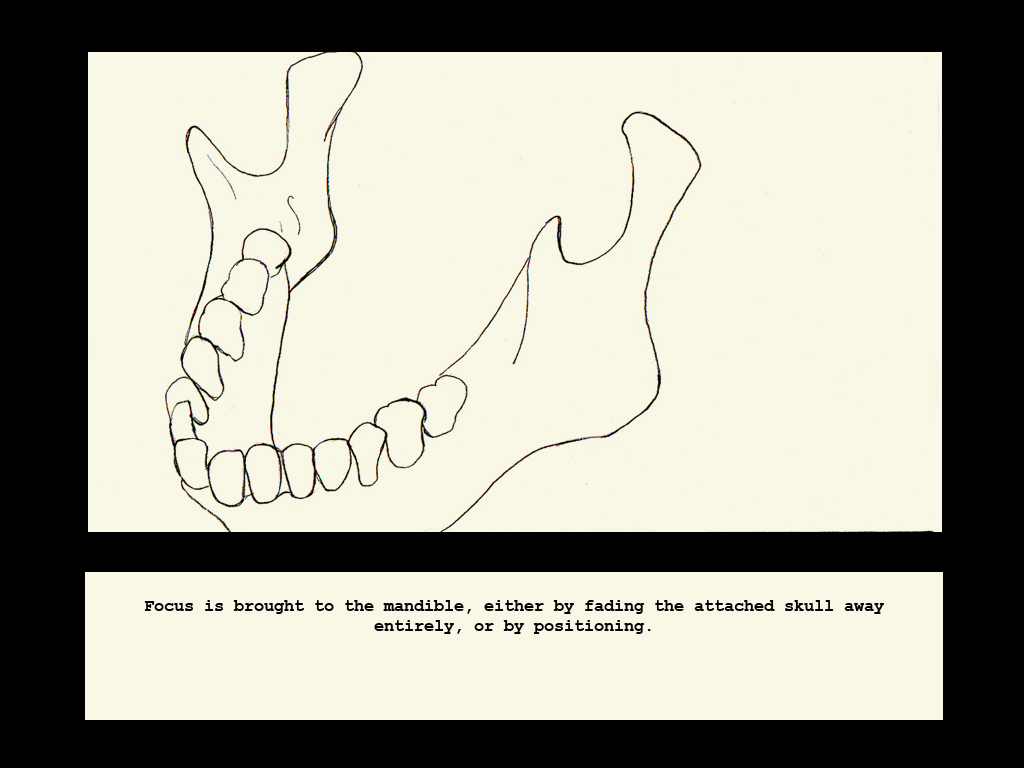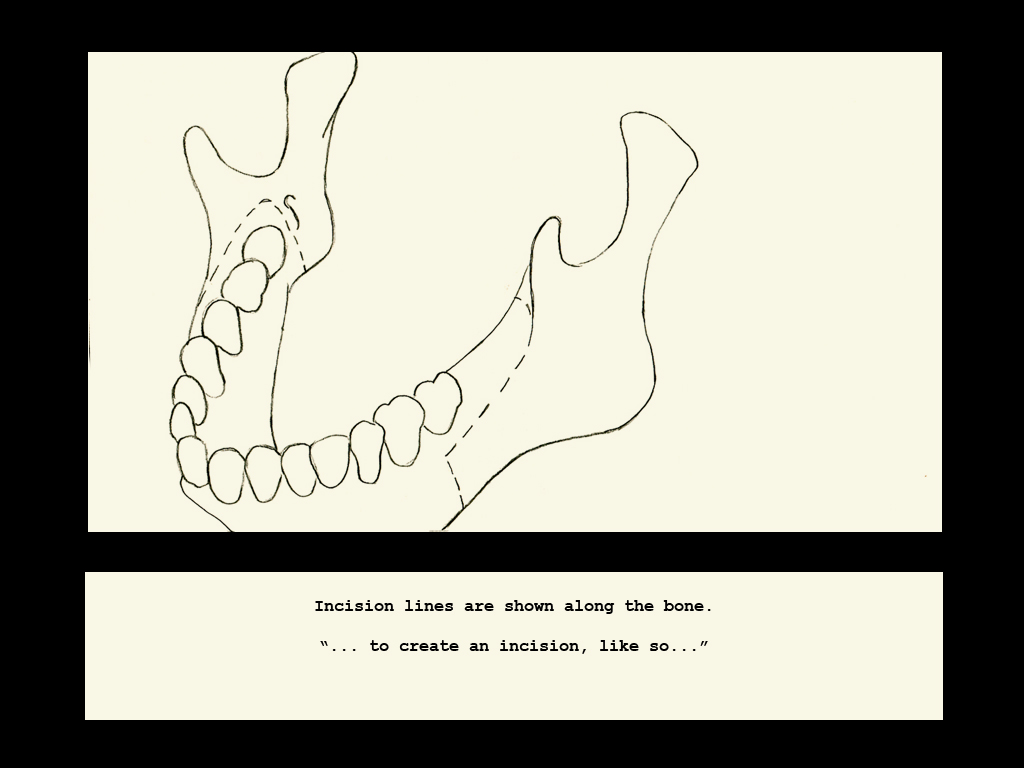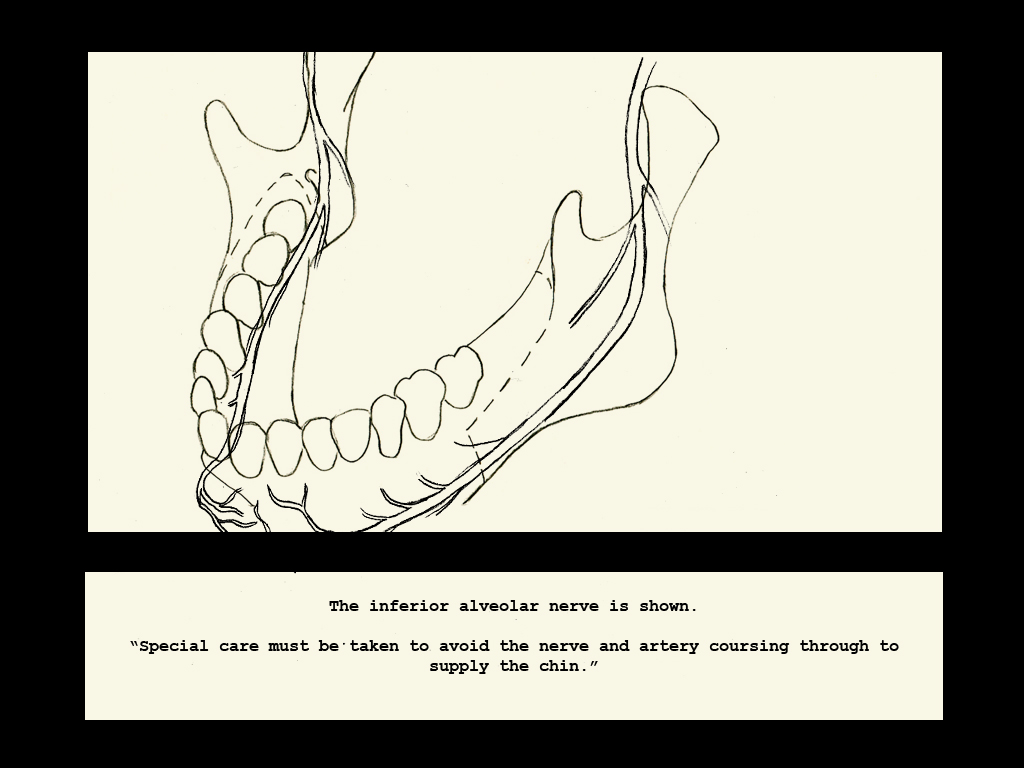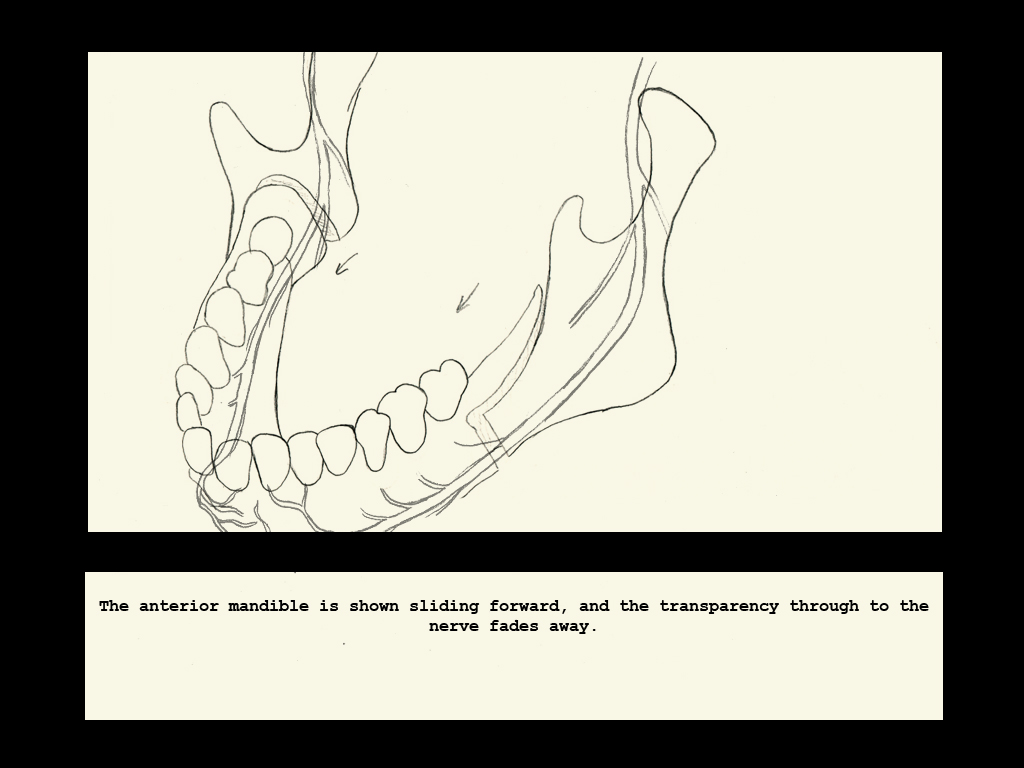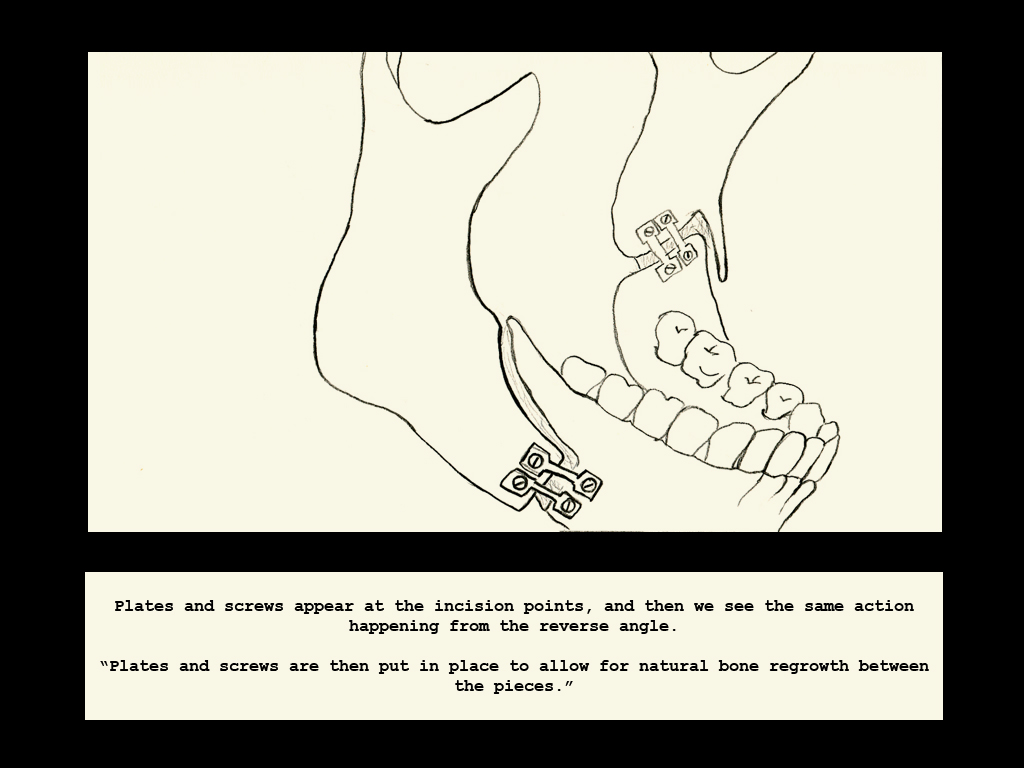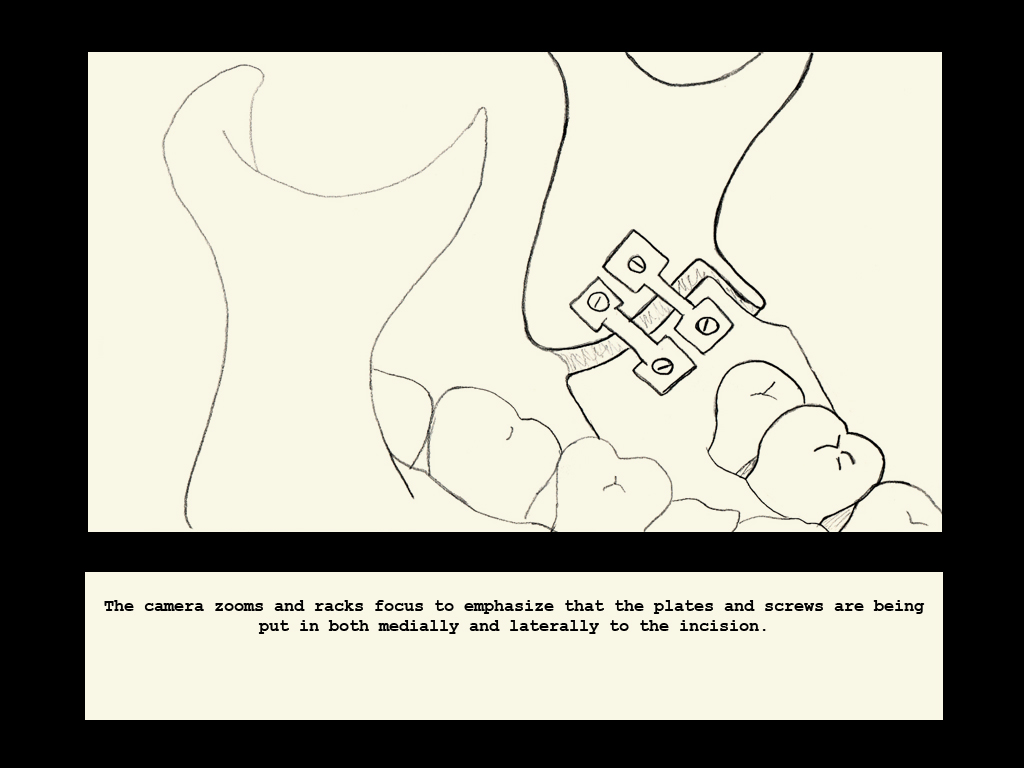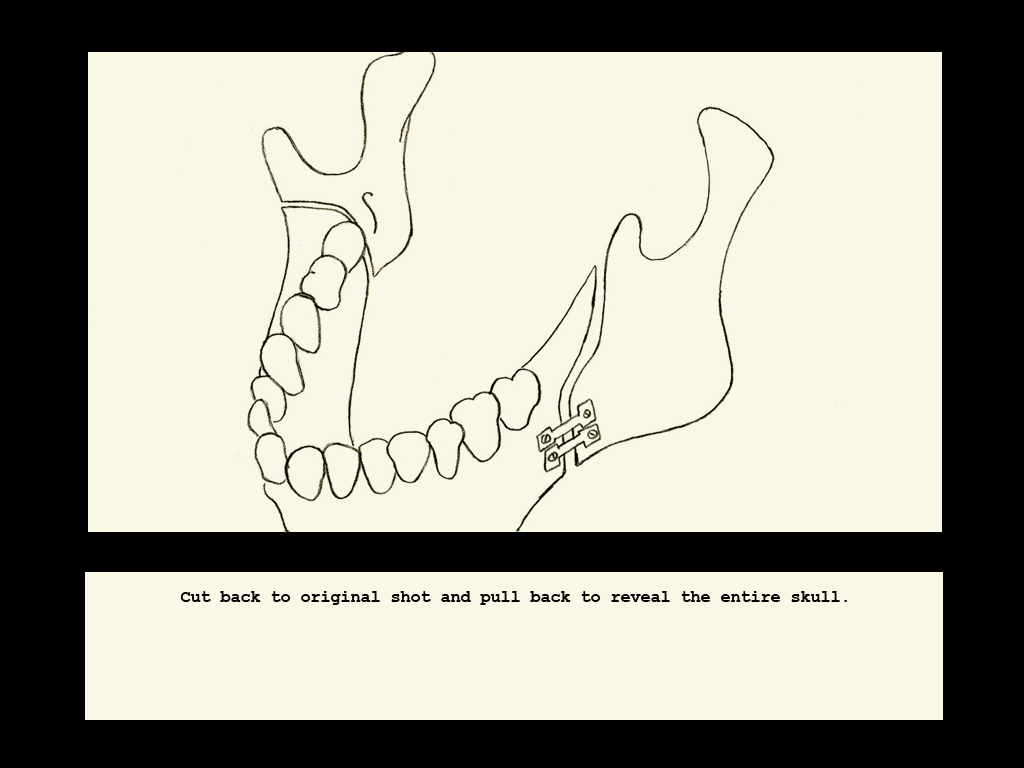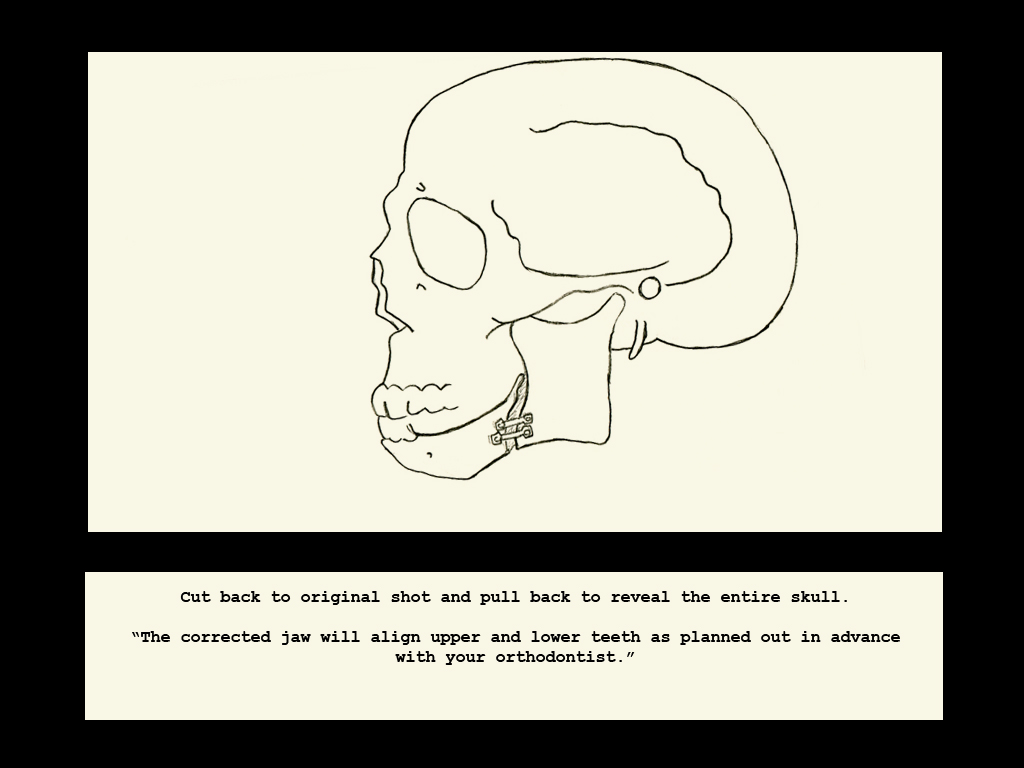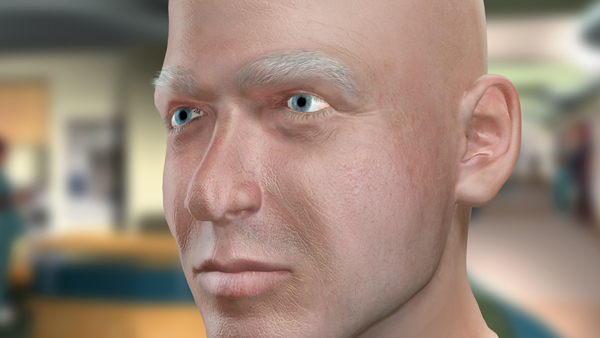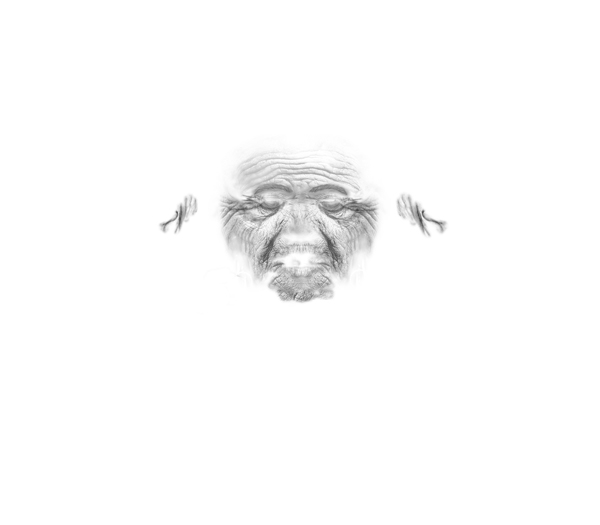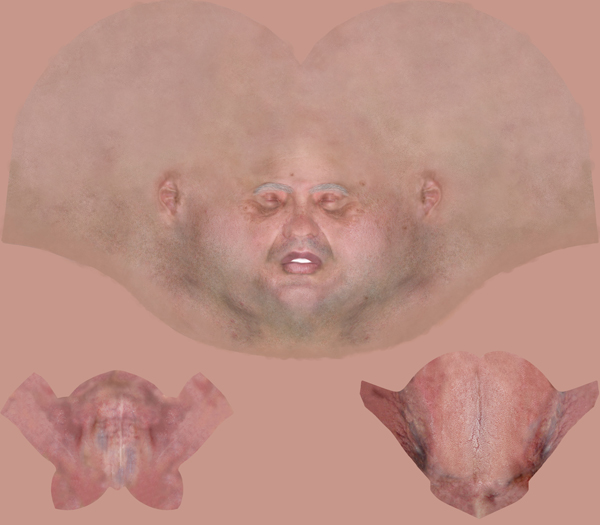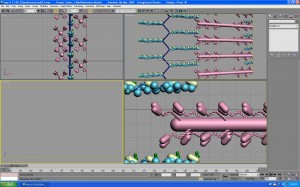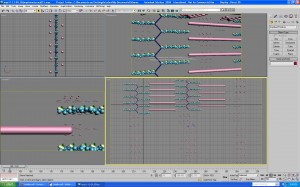Archive for the ‘animation’ tag
Script and Storyboards
I’m so excited. Tomorrow I get to observe the surgery on which I am basing my project research. I’ve been wanting to do this for a long time now, so it only seemed appropriate that I post the current version of the script and storyboard I have been working on.
First, the script (click to access the PDF)…
And then the accompanying storyboards…
Mouse Party – from the University of Utah
So we’ve been doing some work with Flash this summer, and we’re designing basic Flash interactives. It sounds like they are a lot of work to put together, especially if you don’t know what you’re doing. Personally I’m still mind boggled at the idea that I sometimes have to use two equal signs to mean something is really equal. My plan is to put together a little interactive where the user gets to poke at a brain and learn a brief overview of how the various areas are organized up there. So far I only have a screen flow chart, so that’s only a little bit exciting. But I have found myself thinking back on an interactive a teacher showed us in our first year with the program called Mouse Party. The more I learn about what goes into these, the more impressed I am with this. It’s fun, it’s creative, and it’s informative. And the animation is so stylish and clear!
http://learn.genetics.utah.edu/content/addiction/drugs/mouse.html
Check it out!
First Flash Animation
So, it’s been quite a week out here, and I found myself up late last night working on my very first 2D animation in Flash for a new class that I’m taking. Well, between the learning curve and the late of it, it wound up being quite the bizarre little exercise. I did learn a lot in making it though, and I suppose that was the point over all. If you’d like to see it, take a look
One thing that did particularly catch my attention was in exporting the file into Quicktime format. You’ll notice the YouTube version has some artifacting going on in it. That happened every time I exported as a Quicktime. YouTube doesn’t accept the .swf file format, so I went ahead and posted this one anyways. I’ll have to post further when I know more and can explain just what’s going on with that.
Preparing to Make an Animation
Today I was sent a link to a Portuguese medical animation company called Biosphera that has created an animation about the same procedure I have been studying lately. This one shows the bilateral sagittal split osteotomy of the mandible. I’ve linked to it here if you care to take a look.
http://www.biosphera.com.br/e-retrognathism.asp
In mine, I was planning to have less emphasis on the tools, more emphasis on the artery and nerve, and I also intend to include an osseous genioplasty procedure because the two are often done together in the same surgery. For those of you reading this who don’t speak medical jargon, I’m basically talking about a surgery that lengthens the jaw, bringing the lower teeth forward, and then in a second procedure to bring out the chin. I’m looking to do this as a take home DVD for patients and their families prior to surgery.
I have to admit to being a little disappointed to realize that there are already other animations out here on this topic. When I’d started this process I was under the impression that there just weren’t any. But at the same time, it’s always fun to see how other people have handled the same topics. Here is another one I found on YouTube that covers a different facial adjustment procedure but includes the osseous genioplasty.
http://www.youtube.com/watch?v=8h0wG1rKPSY
All in all, I’m glad that I didn’t find these other examples earlier. This way I’ve had more time to think about my own solutions to presenting the information in the most accessible way possible. For instance, my version is already scripted to include narration, and I’m happy with that choice. I’m actually hoping to translate that narration into Spanish as well for more widely accessible final DVD. I’ve been getting some advice against attempting the dual-language feature this week, but I have to say, I’ve been really attached to the idea ever since thinking of it. Everywhere I’ve ever lived has had a significant Spanish speaking population, and while I’ve never truly been fluent myself, it just feels right to make the effort for this.
Well, I’m sure I’ll be writing more about this later. There is just so much to think about when making decisions about the level of detail to include for patients, finding the right level between showing something gory and showing something completely whitewashed, emphasizing risk without being too scary, emphasizing the benefits of surgery without implying a guarantee, and then there’s just making it all look good. You’re all in it with me now, readers. Let’s make an animation!
My 3D Animation and Graphics Demo Reel
Here it is, my demo reel!
I cut this together using Final Cut Pro. I created the titles in After Effects. And the pieces you see are clips from the animations I have worked on here at UIC, mixed with some 3D stills, and a couple of illustrations I recently put to motion, again using After Effects.
The Making of Phacoemulsification
So this is just all kinds of awesome. The amazingly talented Josy Conklin has put together this nifty little video on the making of our recent animation “Phacoemulsification.”
Thanks Josy!
Phacoemulsification – the video!
It’s official. We have a new medical animation!!!
Now presenting Phacoemulsification!!!
It’s funny, we’ve been working on this all semester long, but only just last night did it hit me that we really have this whole awesome animation.
You may remember previous posts about this one, in particular my work with Otis, aka Simon…
Remember Simon?
 I originally wrote about him here.
I originally wrote about him here.
Well he’s come a long way what with the wrinkles and the eyebrow fur, and the subsurface scattering. And now he’s the Otis you see in our phacoemulsification video.
Really the whole thing has come such a long way, looking back just two months ago when we were at the animatic stage.
The eyes themselves were done by Josy Conklin, who handled most of the procedural animation along with Matt Cirigliano. Matt also did a good deal of the compositing of those procedural shots, along wtih Eric Small, who did a lot of the special effects, shared most of the instrument modeling with Matt, and who also took on the molecular sequence in Maya.
The only modeling I really did was that of the eye speculum, and just tweaking the pre-fab head our of Poser guy into old age. That was mostly a texturing job though. If anything I hope I didn’t wind up toning all those wrinkles down too far for all the work that went into placing them just so.
The final bump map went something like this…
And the final color map like this…
I had to do a lot of tweaking right around the eyes to avoid distortion with as close as we came in with the camera in 3DsMax. This would be the part where I started using a lot of my house guest’s skin texture in high res photographs to pump up our resolution, while maintaining a blend of aged skin images in the surrounding eye area wherever possible…
There wound up being three main After Effects renders which were then compiled using Premiere. Matt and I are really the most sound effect obsessed, so after compiling our various renders, he and I tackled sound, and also tag teamed on the various titles needed.
All in all, I think the project is a big success. Our instructor suggested this morning that we submit the piece to this summer’s AMI annual meeting in Portland. I think we will.
“Graffiti”
So there’s this cute little PSA animation running around from France. It features a very lonely bathroom graffiti penis finding his way into the debauchery of the bathroom walls with the other graffiti. It’s very different work from the animations we’ve been doing in the biomedical visualization department here, but memorable, skillfully animated, and conveying the message of condom usage…
http://attitude.adforum.com/top5/2010/01/27/aides-graffiti-tbwaparis/
Animation Finished!
This week I finally finished the 3D animation that I have been working on this semester. It’s subject is the sliding filament theory of muscle contraction and I believe that I have managed to put together something clear.
I find that I still struggle in places with 3DsMax, but learning After Effects and coming back to working in Final Cut Pro again was a lot of fun. Our class on the whole created some really great work.
Animation Woes
I’m going to try something a little bit differently here today. I’m going to write about a problem that I have been encountering lately using 3DsMax. Maybe, just maybe, someone reading here will have some insight.
So, I’ve been taking a class lately on medical 3D animation. For my topic, I chose to delve further into the sliding filament theory of muscle contraction. I was having a little trouble getting the myosin necks to move appropriately and the advice to that was to use bones. Having never done that before, it’s been a madhouse of tutorials and learning all that I can about using them. It took a little while but I finally got them to work. Now, being an individual neck of the myosin, it made sense to instance the little heads and neck cluster across the myofilament, and then instance the myofilament itself to build the 3D reality of how myosin and actin myofilaments interact.
Sounds great right? Well I thought so. And I sure was excited when I finally got the bones set up with inverse kinematics, and the myosin heads and neck shape skinning it without distortion. I made a bunch of instances, and the whole row of them would do a little chorus line dance when I pulled the strings on the lead myosin head and neck group. The next part is where it starts to get wonky.
So I took my instances and carefully placed them all along the body of the myofilament. I found that removing the kinematics and bones from the instances allowed me more flexability in placement and still kept the movements I was after. Everything looked great. You might even say it was fantastic. But after several rebuilds of my scene, I have come to learn that this is the exact point where things go haywire. I have been saving the project all along, but it seems that I cannot open any of the saved versions after this point. Well, I *can* open them, but it’s never the way I’ve left it.
So for instance, this is a screen shot of my happy little project *prior* to turning anything off, or shutting down…
Then this is what happens when I open the same project later (I believe there are actually a few minutes of work between these two screen shots, but not much). The myosin heads and necks fly off, out into my scene. As you can see, I’m hitting a glitch…
So I spoke with a friend about it, who has done some work in games. He had me convinced that the problem I was hitting just had to be the mirror modifier that I’d used to make the intertwined necks of the myosin heads. So I deleted and rebuilt the myosin yet again, only to learn that the mirror modifier is not in fact the problem, and I am still unable to save and reopen the project.
My modifier stack is clean as a whistle, just the object used as skin and the skin modifier. My bones on their own right are great. My inverse kinematics are just what I wanted. This happens whether objects are grouped or ungrouped. The actin myofilaments remain unaffected. So what is going on with my myosin? I am at a complete loss for this one.
If any of you reading have ever come across this before, I would love to hear about it, and particularly what you did to either fix it or get around it.
